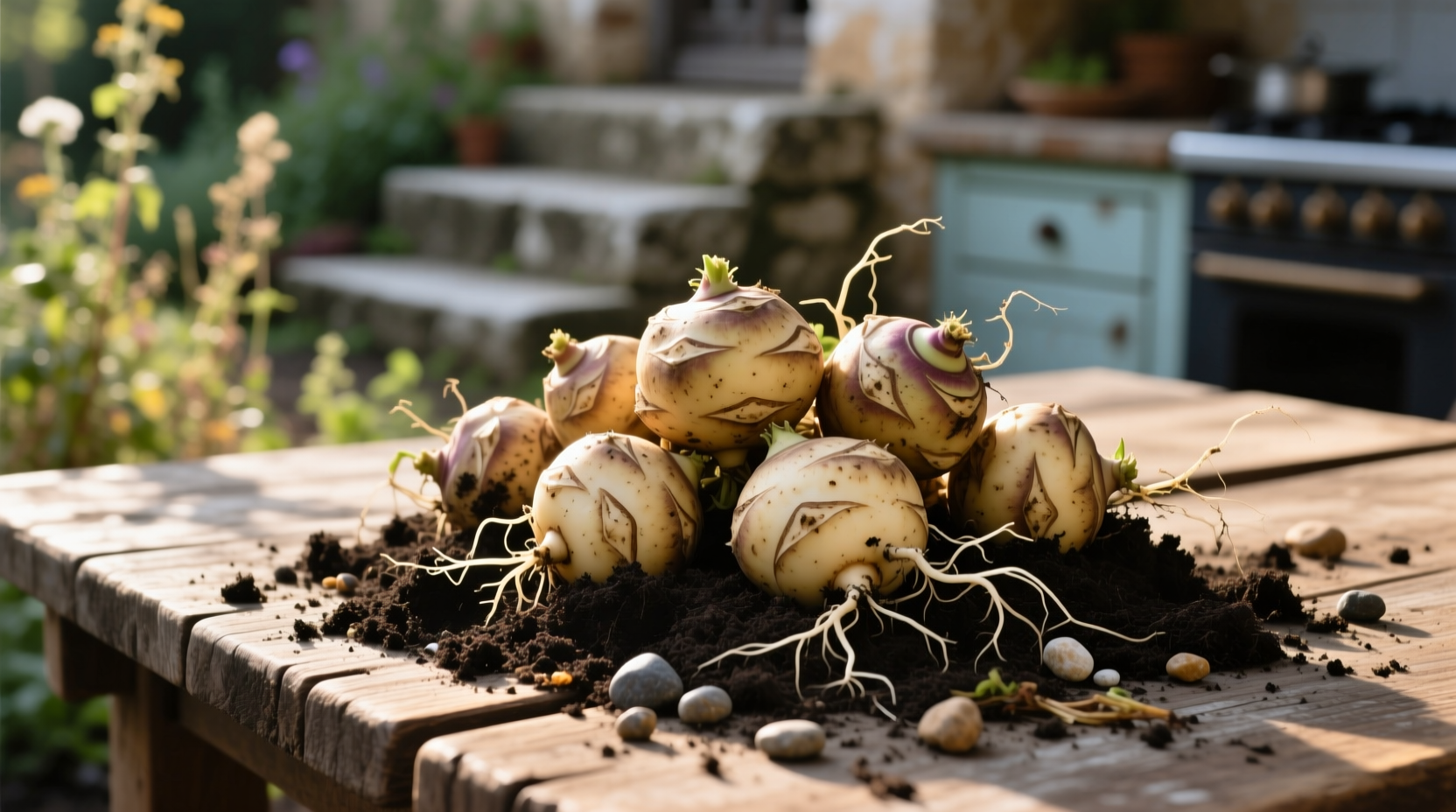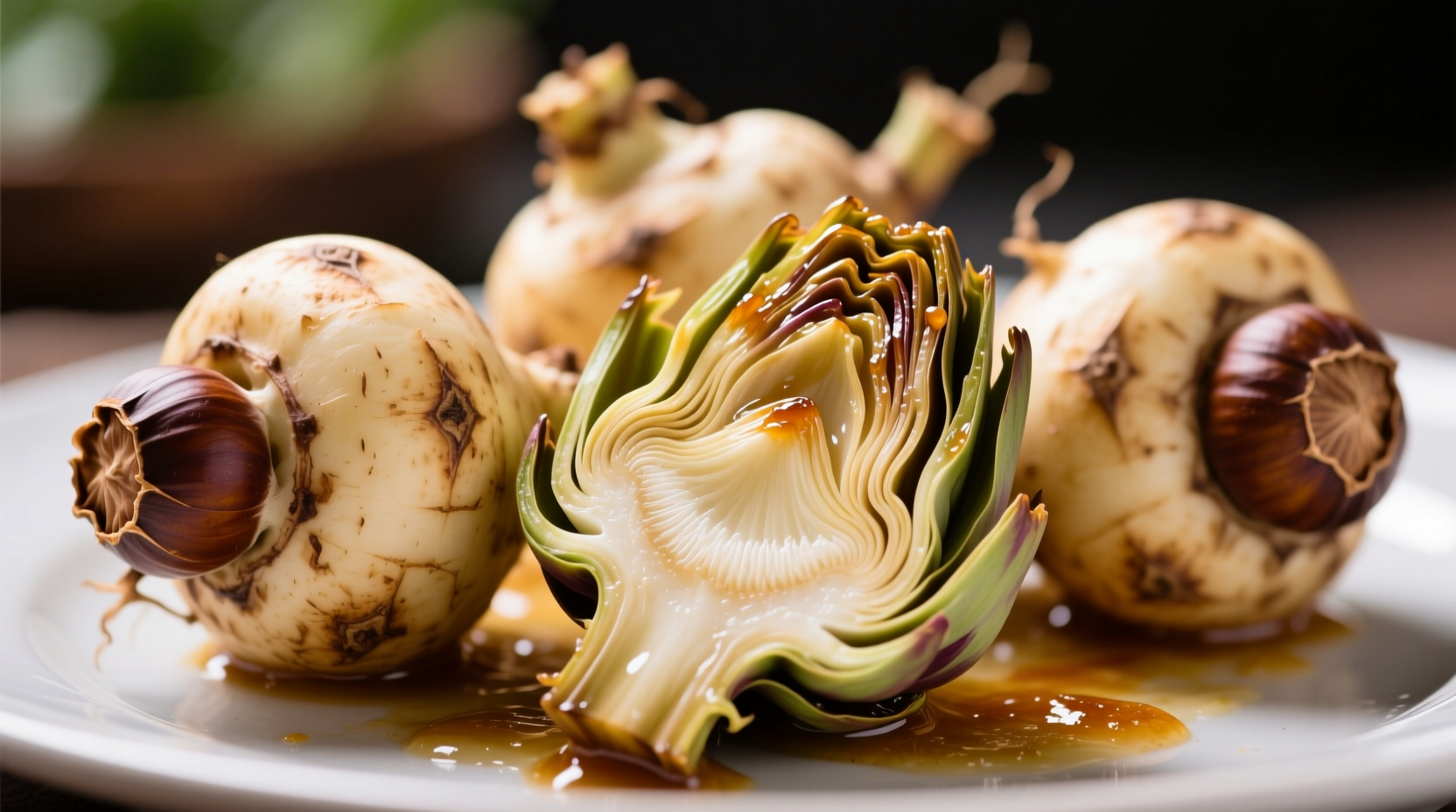If you've ever wondered what sunchokes taste like, you're not alone. These knobby tubers confuse many home cooks with their unusual appearance and unexpected flavor profile. As a culinary professional with extensive experience working with seasonal produce, I can tell you exactly what to expect when preparing these fascinating vegetables.
The Distinctive Flavor Profile of Sunchokes
Sunchokes, also known as Jerusalem artichokes (Helianthus tuberosus), deliver a complex taste experience that surprises first-time eaters. Their flavor contains three primary elements:
- Subtle sweetness - more pronounced when raw than cooked
- Earthy undertones - reminiscent of artichoke hearts
- Nutty finish - similar to fresh chestnuts or water chestnuts
When raw, sunchokes offer a crisp, juicy texture comparable to jicama or radish, making them excellent for salads and slaws. The raw flavor profile leans sweeter with a refreshing crunch that disappears when cooked. Cooking transforms their texture to more potato-like while deepening the earthy notes.

How Preparation Methods Affect Sunchoke Flavor
Understanding how different cooking techniques impact sunchoke taste helps you maximize their potential in recipes:
| Preparation Method | Texture Result | Flavor Transformation |
|---|---|---|
| Raw (sliced thin) | Crisp, juicy, crunchy | Pronounced sweetness, mild artichoke flavor |
| Boiled | Soft, slightly grainy | Muted sweetness, enhanced earthiness |
| Roasted | Crisp exterior, creamy interior | Caramelized sweetness, nutty depth |
| Pureed | Silky smooth | Rich, complex earthiness with subtle sweetness |
Professional chefs often roast sunchokes to develop their natural sugars through caramelization. This technique creates a flavor profile closer to roasted parsnips with a distinctive nutty finish that makes them stand out from more common root vegetables.
Sunchokes vs. Similar Vegetables: Taste Comparison
Many people mistakenly assume sunchokes taste like artichokes because of their name, but they're actually members of the sunflower family. Here's how they compare to other vegetables you might be familiar with:
- Potatoes - Sunchokes have a more complex flavor with noticeable sweetness and nuttiness that potatoes lack
- Artichoke hearts - Similar earthy notes but sunchokes are significantly sweeter and less bitter
- Water chestnuts - Comparable crisp texture when raw, but sunchokes offer more pronounced flavor
- Jicama - Similar crunch when raw, but sunchokes have earthier, less sweet profile
- Celery root - Both have earthy notes, but sunchokes are sweeter with distinctive nuttiness
According to agricultural research from Cornell University's College of Agriculture and Life Sciences, the unique flavor comes from inulin content - a type of dietary fiber that provides sweetness without affecting blood sugar like starches do. This same compound causes digestive issues for some people when consumed in large quantities raw.
Seasonal Considerations and Flavor Variations
Sunchoke flavor changes throughout the growing season and after harvest. Understanding these variations helps you select the best tubers for your needs:
- Early harvest (fall) - Highest water content, crispest texture, most pronounced sweetness
- Late harvest (winter) - More earthy flavor as inulin converts to sugars during cold storage
- Stored sunchokes - Develop stronger nutty notes after 2-3 weeks in cool storage
The USDA Agricultural Research Service notes that sunchokes grown in sandy soils develop a cleaner, more delicate flavor compared to those grown in clay soils, which tend to have stronger earthy notes. This terroir effect means your sunchokes' taste might vary slightly depending on where they were grown.
Common Misconceptions About Sunchoke Taste
Several myths persist about sunchoke flavor that deserve clarification:
- "They taste like Jerusalem artichokes" - Despite the name, sunchokes have no relation to artichokes
- "They're just sweet potatoes" - Completely different flavor profile and botanical family
- "All sunchokes cause digestive issues" - Only problematic for some people when eaten raw in large quantities
- "They taste bitter" - Properly stored sunchokes have no bitterness when prepared correctly
Practical Tips for Cooking with Sunchokes
To maximize sunchoke flavor in your cooking:
- Peel them just before use to prevent oxidation (like potatoes)
- Soak in acidulated water (water with lemon juice) if preparing ahead
- Pair with complementary flavors: sage, thyme, brown butter, apples, or bacon
- Try roasting with olive oil and rosemary for enhanced nuttiness
- Use raw in salads with citrus dressing to highlight their crisp sweetness
Professional chefs recommend combining sunchokes with potatoes in mashed preparations - the starch from potatoes balances the inulin in sunchokes while creating a richer flavor profile than mashed potatoes alone. This technique makes sunchokes more approachable for first-time eaters while introducing their distinctive taste gradually.
Frequently Asked Questions
Do sunchokes taste like artichokes?
No, despite the "artichoke" in their common name, sunchokes don't taste like artichokes. They share some earthy notes with artichoke hearts but have a distinctive sweet, nutty flavor profile more similar to water chestnuts or fresh chestnuts. The name comes from their relation to sunflowers, not artichokes.
Why do sunchokes taste sweet when raw but less sweet when cooked?
Sunchokes contain inulin, a type of dietary fiber that provides natural sweetness. When raw, this inulin gives them a noticeable sweet, crisp flavor. Cooking breaks down some inulin into fructose, but the water content also evaporates, concentrating earthier flavors and making the sweetness less pronounced compared to the raw state.
How can I reduce the earthy flavor of sunchokes if I find it too strong?
To mellow the earthy notes, try roasting sunchokes with a touch of maple syrup or honey, which enhances their natural sweetness. Alternatively, boil them with apple slices or lemon juice, which balances the earthiness. For the mildest flavor, peel them thoroughly and use in pureed soups with complementary ingredients like potato or parsnip.
Do different colored sunchokes taste different?
Yes, skin color indicates subtle flavor differences. Brown-skinned sunchokes tend to have the strongest earthy notes, red varieties offer slightly sweeter profiles, and white-skinned types provide the most delicate, nutty flavor. The interior flesh color (white to pale yellow) doesn't significantly affect taste, though paler flesh often indicates younger, more tender tubers.
Can I eat sunchokes raw, and how does that affect their taste?
Yes, sunchokes are excellent raw with a crisp, juicy texture similar to jicama or radish. Raw sunchokes have a more pronounced sweetness and refreshing crunch compared to cooked versions. Their flavor is milder when raw, making them perfect for salads and slaws. However, some people experience digestive discomfort from raw sunchokes due to their inulin content, so start with small portions if trying them raw for the first time.











 浙公网安备
33010002000092号
浙公网安备
33010002000092号 浙B2-20120091-4
浙B2-20120091-4